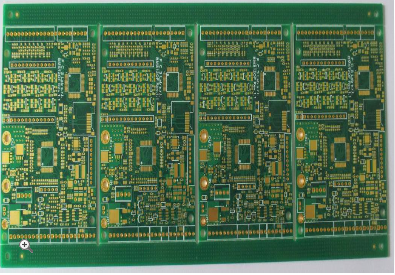PRODUCTS
Understanding High Frequency Board Loss

Understanding high-frequency board loss is crucial for engineers designing high-speed digital circuits and RF systems. The increasing clock speeds and data rates in modern electronics push components to their limits, leading to significant signal degradation if not properly addressed. Ignoring these losses can result in system instability, malfunction, and ultimately, product failure. This article delves into the various mechanisms contributing to high-frequency board loss, offering insights into mitigation strategies and best practices for design optimization. It's a critical area impacting performance across numerous applications, from 5G communications and high-performance computing to automotive electronics and aerospace systems.
Dielectric Losses
One major source of high-frequency board loss stems from the dielectric material used in the printed circuit board (PCB). At higher frequencies, the polarization mechanisms within the dielectric material cannot keep up with the rapidly changing electric fields. This leads to energy dissipation in the form of heat, effectively reducing signal strength. The dielectric loss tangent (tan δ), a material property, quantifies this loss. A lower tan δ indicates lower losses. Choosing a PCB substrate with a low tan δ is paramount, especially for high-frequency applications. Different materials, such as PTFE (polytetrafluoroethylene) and Rogers RO4000 series, exhibit different dielectric properties, making material selection a critical design consideration.
Furthermore, the thickness of the dielectric layer influences loss. Thicker dielectric layers lead to greater energy dissipation. Therefore, minimizing the dielectric thickness, while maintaining sufficient mechanical strength, contributes to reduced loss. This is often a trade-off between signal integrity and manufacturing feasibility. Careful consideration must be given to the balance between these factors in the design process.
Conductor Losses
The conductors themselves contribute significantly to high-frequency board loss. At higher frequencies, the skin effect becomes prominent. This phenomenon causes the current to concentrate at the surface of the conductor, reducing the effective cross-sectional area for current flow. This increased current density leads to higher resistance and consequently, greater power loss. To mitigate skin effect losses, wider traces and thicker conductors are often necessary. However, this can lead to increased board area and manufacturing complexities.
Another important factor related to conductor losses is the surface roughness. A rough surface increases the effective path length for the current, further increasing resistance and loss. Therefore, high-quality PCB manufacturing processes that ensure smooth conductor surfaces are essential. Proper surface finishing techniques can significantly minimize this type of loss.
Radiation Losses
High-frequency signals can radiate away from the PCB traces, leading to significant signal loss and potential electromagnetic interference (EMI) issues. This radiation is particularly problematic in unshielded PCBs. Proper impedance control through controlled trace geometry and the use of controlled impedance transmission lines is critical for minimizing radiation loss. This ensures the signal energy remains confined to the intended path.
Effective grounding and shielding techniques are essential for minimizing radiation losses. A well-designed ground plane provides a low-impedance return path for the signal currents, reducing radiation. Shielding the PCB with conductive enclosures further reduces radiation and improves EMI performance. Careful attention to grounding and shielding practices is crucial for signal integrity at high frequencies.
Coupling Losses
Signal coupling between adjacent traces and components can lead to significant loss and crosstalk. Closely spaced traces can capacitively and inductively couple, leading to signal degradation and unwanted signal transfer. Proper trace routing and spacing are crucial to minimize these coupling effects. Signal integrity analysis tools can help engineers predict and mitigate these losses during the design phase.
Careful consideration of component placement is also essential. Placing sensitive components away from high-speed traces can reduce the impact of coupling. Using decoupling capacitors strategically near integrated circuits helps to suppress noise and reduce coupling effects. A well-planned layout that accounts for these coupling effects is critical for overall system performance.
Mitigation Strategies and Conclusion
Minimizing high-frequency board loss requires a holistic approach encompassing material selection, careful PCB layout, and effective grounding and shielding strategies. Utilizing simulation tools and employing experienced PCB designers can significantly improve signal integrity and reduce losses. By understanding the various mechanisms contributing to these losses, engineers can design more efficient and reliable high-frequency systems. The continuous evolution of high-speed electronics necessitates a deep understanding of these loss mechanisms and the ongoing development of advanced mitigation techniques.
SUBSCRIBE
INQUIRY

